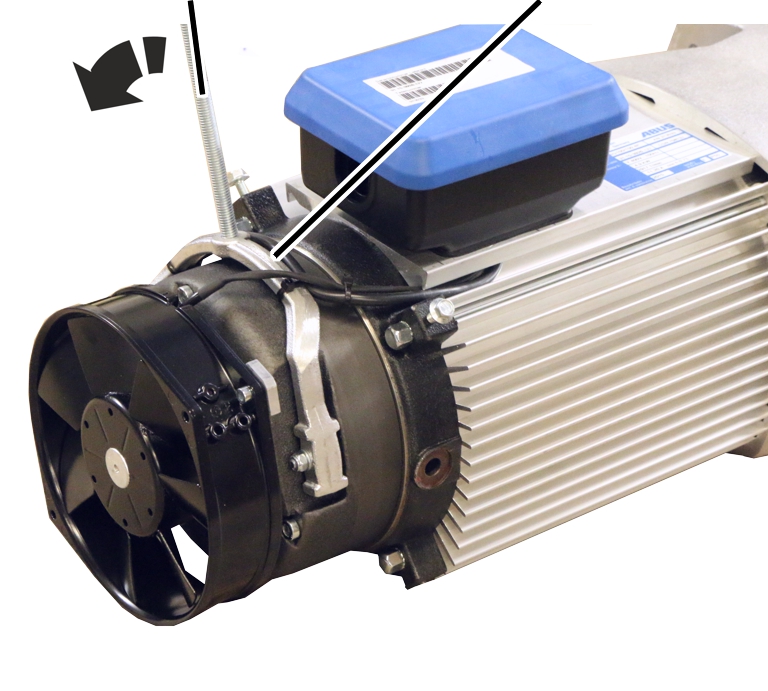Lowering the load by hand in an
emergency (emergency lowering)
In the event of a power failure, a defective hoist motor or a
defective brake coil, the load can be lowered by hand. To do so, the brake is
released manually using the brake release lever.
Lowering a load by hand is an emergency measure.
The pictures show the procedure on a GM 1000 modular wire
rope hoist. The procedure on GM 800 does not differ significantly from this.
|

|
Danger from falling load!
The load accelerates quickly if the brake is
released too far. This could cause the load to lower in an uncontrolled
fashion.
Warn persons around the crane about the emergency
lowering procedure. Activate the brake release lever very carefully.
|
Securing the
operating range
 Cordon off the operating range around the crane sufficiently.
Cordon off the operating range around the crane sufficiently.
 Inform persons around the crane about the emergency lowering
procedure.
Inform persons around the crane about the emergency lowering
procedure.
Removing the fan
cover
 Remove the screws on the fan cover.
Remove the screws on the fan cover.
 Pull the fan cover off to the rear.
Pull the fan cover off to the rear.
Lowering a
load
|
Threaded
rod |
Brake
release lever |
|

|
 Screw a threaded rod M8 into the brake release
lever.
Screw a threaded rod M8 into the brake release
lever.
 Carefully, and slowly, tilt the brake release lever backwards using
the threaded rod.
Carefully, and slowly, tilt the brake release lever backwards using
the threaded rod.
● The brake
is released, the load slips downwards.
 Tilt the brake release lever back if the load is losing height too
quickly.
Tilt the brake release lever back if the load is losing height too
quickly.
Replacing the
brake
The brake lining is subject to a heavy load during emergency
lowering and can quickly overheat. Therefore, the brake rotor must be replaced
afterwards. See Replacing the brake rotor on
the hoist drive.



